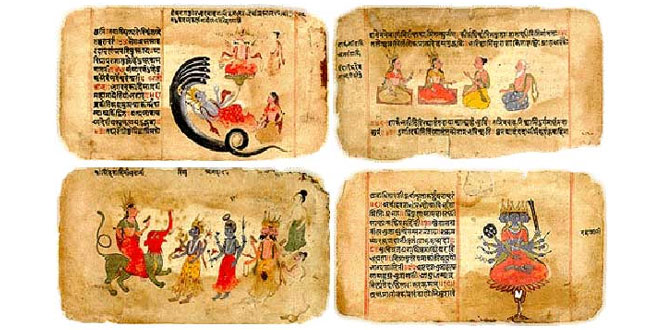Question: In addition to the Vedas, what are the other texts that form a part of vedic literature?
Answer: The other texts that form a part of Vedic literature. The Brahmanas, the Aranyaks, the Upanishads and the epics, the Ramayana and the Mahabharat were.
Question: Which were some of the goods worshipped during the Early Vedic period?
Answer: During the early Vedic Age, the people worshipped natural gods and godnesses such as Indra (the god of thunder), Vayu (the wind god), Surya (the sun god), Agni (the god of fire), Varuna (the god of water), Prithvi (the god of earth), Soma (the god of plants), Usha (the goddess of dawn) and Yama (the god of death).
Question: Why is the Later Vedic Age called the Epic Age?
Answer: The events mentioned in the Ramayana and Mahabharata are believed to have taken place towards the end of the Later Vedic period. Hence this period is also called the Epic Age.
Question: Name the four ashrams in a person’s life.
Answer: According to the religious texts, the life of an individual was divided into four stages or ashramas. The four stages were – brahmacharya or student life, grihasth or life a householder (father and husband), vanaprastha or the life of a hermit and finally sanyasa or total renunciation of the world.
Question: What do you know about the diet of the people in the Later Vedic period?
Answer: The main diet of the people consisted of rice, wheat, barley, ghee, meat and fish. Soma and sura, which were intoxicating drinks, were also consumed. Milk and other dairy products such as butter and cheese were also eaten.
Question: What is the significance of the Rig Veda?
Answer: The Rig Veda is the oldest of the Vedas. It is a collection of prayers in honour of various Hindu gods and goddesses. It consists of 1o28 Sanskrit hymns which are organized into ten books or mandalas. These hymns are meant to be recited at sacrificial rituals.
 Class Notes NCERT Solutions for CBSE Students
Class Notes NCERT Solutions for CBSE Students



Such a nice app.